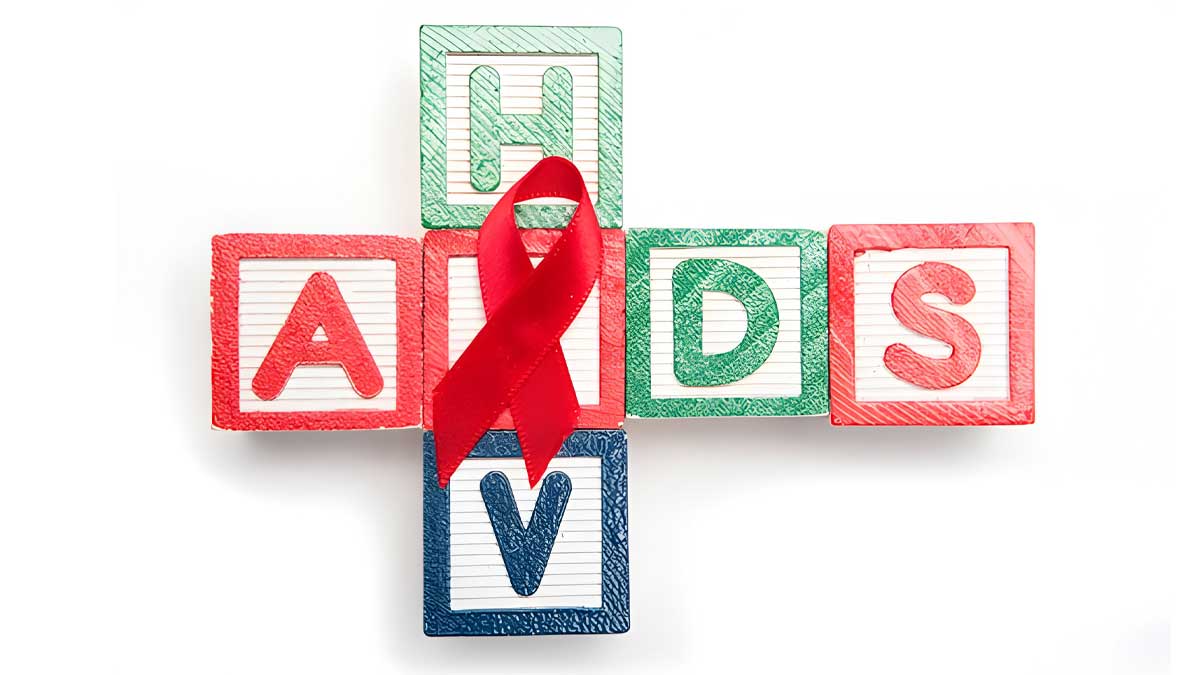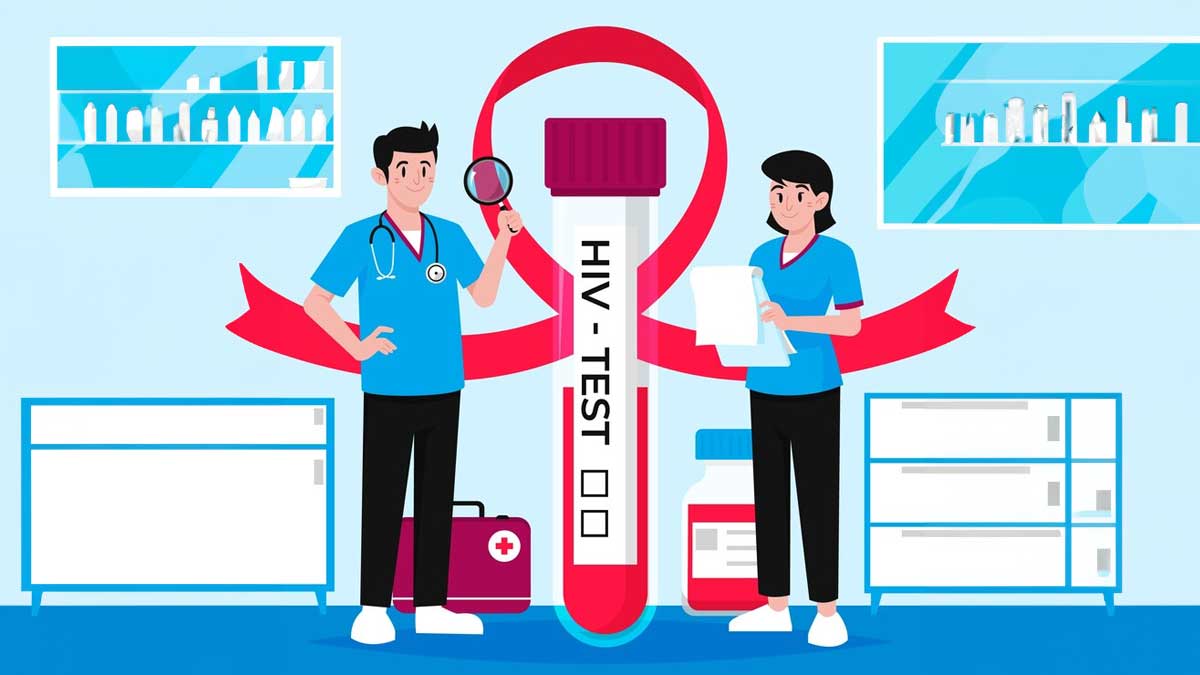
The journey from HIV infection to the diagnosis of AIDS is both complex and nuanced. Understanding this progression is vital, as it informs the diagnostic approach and management strategies. This article outlines the distinction between HIV and AIDS, introduces the two types of HIV, delves into the NACO diagnostic algorithm, explains the CDC's classification of HIV, and discusses the laboratory tests used in diagnosis and assessing the severity of the disease.
Table of Content:-
The Fundamental Dichotomy: HIV and AIDS
According to Dr Avinash Phadke, President & Mentor at Agilus Diagnostics Ltd., “To comprehend the magnitude of our diagnostic quest, it's essential to first distinguish between HIV—the virus—and AIDS—the syndrome. HIV is a retrovirus that harms the immune functioning of the body, primarily the CD4+ T cells, integral to the body's defence mechanisms. AIDS, on the other hand, is a condition characterized by a sequence of opportunistic infections or cancers that capitalize on the weakened immune fortress. This transition from HIV infection to AIDS is not immediate; it is a gradual erosion of immunological defences that may span years.”
HIV Types: There are two main types of HIV: HIV-1, which is more widespread and aggressive, and HIV-2, which is less transmissible and primarily found in West Africa. Both types can lead to AIDS, but they differ in their geographic distribution, progression to AIDS, and response to treatments.
NACO(National AIDS Control Organization) Testing Algorithm
Step 1: Initial Screening
Conduct a fourth-generation assay that detects both HIV antibodies and p24 antigen.
Step 2: Confirmatory Test
If the screening is reactive, perform a different antibody detection assay to confirm the result.
Step 3: Supplementary Test
For indeterminate or discordant results, a more specific test, like a PCR test for viral nucleic acid, is used.
CDC Classification of HIV Infection The CDC categorizes HIV infection into three stages based on symptoms and CD4+ T-cell counts:
- Category A: Asymptomatic HIV infection, CD4+ T-cell count >500/µL (A1), 200-400/µL (A2), <200/µL (A3).
- Category B: Symptomatic non-AIDS conditions, CD4+ T-cell count >500/µL (B1), 200-400/µL (B2), <200/µL (B3).
- Category C: AIDS-defining conditions, CD4+ T-cell count >500/µL (C1), 200-400/µL (C2), <200/µL (C3).

Diagnostic Modalities: The Tools of Detection
The armamentarium against HIV/AIDS consists of various diagnostic tools, each with its distinct role and relevance. Some of them as shared by Dr Phadke are:
Rapid Tests and ELISAs: The vanguards of HIV testing, these assays offer the benefit of quick and straightforward testing. Rapid tests, in particular, have revolutionized screening by enabling point-of-care diagnosis, even in resource-limited settings. ELISAs, the first-generation tests, have undergone several enhancements, improving sensitivity and specificity over time.
Despite their widespread use, rapid tests and ELISAs carry the burden of false-positive results, particularly in low-prevalence settings, necessitating confirmatory testing to ascertain true infection status.
Western Blot: Once the cornerstone of confirmatory testing, the Western Blot has now receded into the shadows of diagnostic history. Its meticulous process, while precise, is time-consuming and labour-intensive, prompting the adoption of more efficient assays in modern practice.
PCR Tests: Polymerase chain reaction (PCR) tests have emerged as critical players in the early detection of HIV. By amplifying the virus's genetic material, these tests can identify HIV mere days after exposure, long before antibodies are detectable. However, the higher cost and need for sophisticated lab facilities limit their widespread use as initial screening tools.
Fourth-Generation Assays: Bridging the gap between rapid detection and accuracy, fourth-generation assays are a leap forward in HIV diagnostics. By simultaneously detecting HIV antibodies and the p24 antigen, these assays significantly reduce the window period, the time between HIV exposure and the appearance of detectable antibodies. Their high sensitivity is particularly important in early diagnosis, allowing for the timely initiation of antiretroviral therapy.

Assessing the Severity of HIV
- CD4+ T-Cell Count: Measures the strength of the immune system.
- Viral Load Test: Quantifies the amount of HIV RNA in the blood.
- Complete Blood Count (CBC): This can indicate anaemia or leukopenia associated with advanced HIV infection.
- CD4/CD8 Ratio: Aids in understanding the immune system's status.
Further advances in HIV Testing
“The diagnostic field for HIV/AIDS is on the brink of a revolution, with several advanced technologies emerging to enhance early detection and management of the disease. These innovations are set to expand our capabilities in precision medicine and personalized care,” explains Dr Phadke.
Next-Generation Sequencing (NGS)
- Comprehensive Viral Analysis: NGS provides an in-depth look at the HIV genome, facilitating a nuanced understanding of the virus.
- Personalized Treatment: Insights from NGS enable clinicians to tailor treatment to the individual's specific viral profile.
- Resistance Mapping: This technology aids in identifying and mapping drug-resistant strains of HIV, an essential step in effective treatment planning.
Multiplex Diagnostic Platforms
- Simultaneous Detection: New platforms can detect various HIV strains and co-infections in a single test, enhancing efficiency.
- High-Throughput and Cost-Effective: These platforms offer scalable solutions that can potentially reduce the overall costs of HIV testing.
- Labour Optimization: Automation in these platforms reduces manual labour, streamlining the diagnostic process.
CRISPR-Based Diagnostics
- High Specificity: Utilizing the precision of CRISPR technology, these diagnostics can target and identify HIV DNA with remarkable accuracy.
- Rapid Bedside Testing: The potential for point-of-care testing could bring rapid results directly to the patient's bedside or home.
- Innovation in Research: While still in the experimental phase, CRISPR-based diagnostics represent the cutting-edge of HIV research.
Artificial Intelligence and Machine Learning
- Data Interpretation: Advanced algorithms can interpret complex diagnostic data, providing clinicians with actionable insights.
- Predictive Analytics: AI tools offer predictive modelling to aid decision-making and prognostication.
- Risk Stratification: Machine learning assists in stratifying patients based on risk and optimizing treatment regimens.
Digital Health Integration
- Telemedicine: Remote diagnostics and monitoring are becoming a reality, expanding access to HIV testing.
- E-Health Records: Integrated digital health records ensure that patient data is comprehensive and readily accessible for better management.
- Mobile Health Applications: Apps support self-testing and monitoring, allowing patients to partake actively in their health management.
Conclusion
Summing up, the NACO diagnostic algorithm, alongside the CDC's classification system, provides a robust framework for healthcare providers. By combining these guidelines with various laboratory tests, medical professionals can diagnose HIV accurately, assess its severity, and manage it effectively, improving patient outcomes and quality of life.
Also watch this video
Read Next
Obesity And Diabetes: Expert Lists Dietary Tips For Managing And Reversing Obesity And Diabetes
How we keep this article up to date:
We work with experts and keep a close eye on the latest in health and wellness. Whenever there is a new research or helpful information, we update our articles with accurate and useful advice.
Current Version